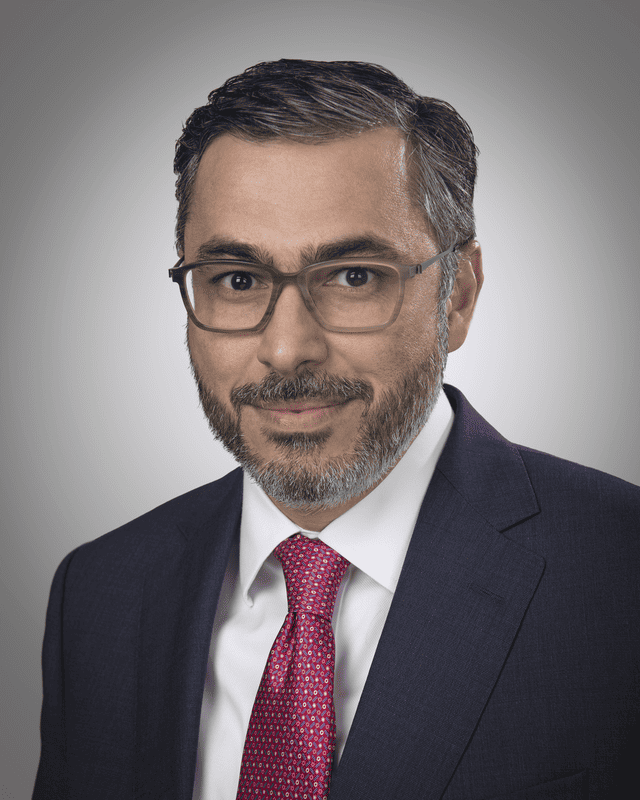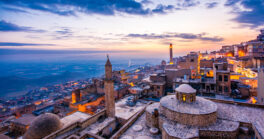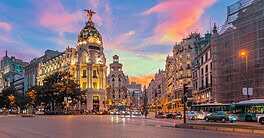The Saudi kingdom seems to be on a path of radical change, broadening options for women and opening to new sectors, but a ruling-family schism could derail the effort.
Saudi Arabia, the world’s largest oil exporter, could have a breakout year in 2018, to be capped by the partial privatization of Saudi Aramco, a key part of the kingdom’s broader Vision 2030 reforms. Crown prince Mohammed bin Salman, 32, also known as MBS, is leading a far-reaching effort to modernize and diversify the economy for the post-oil era. Growth in the non-oil economy is expected to accelerate as structural reforms are implemented.
“There are opportunities everywhere I look,” says David Dew, managing director and group general manager of SABB, which was formerly known as the Saudi British Bank. “The transformation agenda is exciting and real, and the speed of change is quite remarkable. Saudi Arabia is on the move.”
The listing of Saudi Aramco on the Tadawul stock exchange undoubtedly will boost the attractiveness of the bourse to foreign investors, Dew says. The initial public offering of up to 5% in the national oil company is expected to be the largest in the world and will by itself be a significant component in the weighting of emerging-market indexes, he adds.
As the leading international bank in the kingdom, SABB is well positioned to support the growth of the non-oil sector, Dew says. “We are aligning ourselves closely with the relevant pillars of the realization programs under Vision 2030,” he says. “These include programs covering national companies, privatization and the Public Investment Fund [PIF].”
Saudi Arabia has hired consultants to help it promote national companies in areas where it already has a leading market share, such as banking, telecommunications, food, healthcare and retail. Saudi leaders plan to nearly double the PIF, Saudi Arabia’s main sovereign wealth fund, to $400 billion by 2020. It is expected to receive proceeds from the Aramco IPO and to invest in sectors such as real estate and infrastructure, as well as in entirely new industries such as military-equipment manufacturing and cultural and entertainment activities.
Cultural Change
One of the biggest projects the PIF will champion is a $500 billion futuristic mega-city, known as Neom, with passenger drones and more robots than people. The new city is to be built on what is now a barren desert in the northwest section of the country and will be linked by a bridge to Egypt’s Sinai Peninsula. Neom, which will have its own governmental framework and separate laws on taxes, customs and labor, is designed to attract as much global investment as possible. Huge sports and recreation facilities are planned. In a separate project, resorts will be built on 100 miles of the country’s Red Sea coastline.
Previous obstacles to private-sector growth are falling by the wayside. Starting in June, social reforms will let women drive—not only automobiles, but trucks and motorcycles as well. More females will be able to enter the labor force. Already, more than 50% of Saudi university graduates are female. “There is no doubt that developments in the kingdom, specifically in terms of stimulating the role of Saudi women, have removed many barriers—including psychological ones,” says Rania Nashar of Samba Financial Group, the first woman CEO of a listed Saudi commercial bank. “The[se] new developments certainly inspire many women to expand their participation and actively pursue their aspirations.”
Movie theaters will be allowed to open in the kingdom as soon as March, following a 35-year ban. The entertainment industry is expected to create thousands of new jobs. To build its tourism and leisure industry, the country recently decided to allow tourist visas.

What holds most appeal for foreign investors? Muhammad Currim Oozeer, CEO of Sidra Capital, calls mining “probably one of the biggest and most promising sectors for Vision 2030,” while also highlighting plans to privatize the healthcare sector and open education to allow full foreign ownership.
Saudi Arabia is also pushing ahead with a renewable energy drive to satisfy its growing energy consumption, he says. And through it all, technology continues to change. “We are seeing an unprecedented upsurge in online banking, at both consumer and corporate levels,” says Samba’s Nashar, pointing to the bank’s continual upgrades to stay current. “I can say with confidence that Samba’s digital-banking service is a source of pride for all employees because it is up to the highest international standards.”
The country has identified small and medium enterprises (SMEs) as a significant pillar in diversifying the economy. “Unfortunately, local SMEs have been facing issues in securing bank financing; and we believe that structured trade finance is an alternative product to bridge this liquidity gap,” says Oozeer. “We are considering introducing structured trade finance in Saudi Arabia in the next year or so.”
Shariah-compliant Sidra Capital offers the world’s largest Islamic structured trade finance fund, the Sidra Ancile fund. “We can confirm that there is a growing appetite for structured trade finance products among investors,” Oozeer says. “There are even regional sovereign wealth funds that are now investing in this strategy.”
A new bankruptcy law expected in the next few months will help banks increase their lending to riskier sectors of the economy, such as real estate and SMEs, says Olivier Panis, senior credit officer for EMEA financial institutions at Moody’s Investors Service. “We expect these two lending segments to contribute positively to a pickup in bank lending in 2018, which we expect will grow by around 4%.”
The government announced, in December 2017, a $19.2 billion private-sector stimulus package focused mainly on housing and small businesses but including an export-import bank to support overseas sales by Saudi industrial and mining companies. This stimulus will support credit growth and improve the profitability of the banks, Panis says.
The introduction of a 5% value-added tax in January 2018 is an obvious headwind to consumer growth, according to James Reeve, deputy chief economist at Samba Financial Group. “However,” he adds, “we believe that this will be more than offset by the impact of the Citizens Account program, which provides cash transfers to lower- and middle-class Saudis—those who are more likely to consume than to save.”
In January, the government announced that it will pay bonuses to military personnel, and support civil servants with an additional $267 a month for one year to help offset VAT and rising domestic energy prices. The Saudi authorities also have released an expansionary budget for 2018, with a substantial (6%-10%, depending on who is doing the analysis) increase in government spending, Reeve says. “This should help revive a private economy that has struggled to adjust to austerity,” he says.
Financial stress indicators are subdued, thanks to the significant upturn in oil prices as a result of production discipline from OPEC, the narrowing Saudi budget deficit and the broader commitment to economic reform, Reeve says.
There is concern in some quarters, however, that the reforms could trigger a backlash against the crown prince that could bring his bold program to a halt. Jason Tuvey, Middle East economist at Capital Economics, says the arrest of 200 or so high-profile businessmen, ministers and princes in November 2017, as part of crown prince Mohammed bin Salman’s crackdown on corruption, could alienate parts of the royal family or deter foreign investors who are being counted on to finance the reforms. Some of those detained turned over large sums of money in exchange for their freedom.
Saudi authorities arrested an additional 11 princes in January who had staged a palace protest in Riyadh. The princes, who were taken to a maximum-security prison pending trial, were upset that the state would no longer pay their utility bills.
“Many supporters of MBS have argued that, by consolidating power, he can now push ahead with the economic reforms outlined in Vision 2030,” Tuvey says. “But we are concerned that MBS’s power grab could ultimately threaten the reforms. The kingdom is moving further away from the consensus-building that has underpinned policymaking for many decades.” Saudi politics has emerged as a key economic risk, Tuvey says.
The Aramco IPO itself is complex and could be delayed. MBS has said the company could be valued at $2 trillion. Tuvey says the markets expect oil prices to be around $55 a barrel in 10 years, putting a reasonable valuation closer to $1 trillion. “If Aramco does miss the $2 trillion target, it will cause a loss of face for MBS,” Tuvey says.
The Saudi authorities will face a test of their austerity credentials a year from now, he says, when they will have to make a tough choice between depleting household incomes and reaffirming their pledge to place public finances on a more sustainable footing.
In a report last October, the International Monetary Fund said that “the reforms are very much in line with previous IMF policy advice.” Still, regional tensions remain high, with ongoing conflicts in Syria and Yemen and the blockade of Qatar.
The future of the six-nation Gulf Cooperation Council remains uncertain. The GCC summit in December 2017 in Kuwait was scheduled for two days but lasted a few hours before ending after a closed-door meeting of about 15 minutes. The rulers of Kuwait and Qatar were the only heads of state to attend, while other countries sent lower-level officials.
Apart from the regional turmoil, Saudi Arabia is making good progress implementing reforms, the IMF said after its annual consultations with Riyadh last July. Growth is expected to strengthen in the medium term. The biggest risks stem from uncertainty about future oil prices and how successful the authorities will be in maintaining the momentum of their ambitious reform.
For GF’s interview with Samba Financial Group CEO Rania Nashar, click here.
|
Central Bank: Saudi Arabian Monetary Agency | |||
|
International Reserves |
US$ 547,260 million | ||
|
Gross Domestic Product (GDP) |
US$ 118.271 billion* | ||
|
Real GDP Growth |
2015 |
2016 |
2017 |
|
GDP Per Capita—Current Prices |
$20,957* | ||
|
GDP—Composition By Sector* |
agriculture: |
industry: |
services: |
|
Inflation |
2015 |
2016 |
2017 |
|
Public Debt (general government |
2015 |
2016 |
2017 |
|
Government Bond Ratings (foreign currency) |
Standard & Poor’s |
Moody’s |
Moody’s Outlook |
|
FDI Inflows |
2014 |
2015 |
2016 |
* Estimates Source: GFMag.com Country Economic Reports



